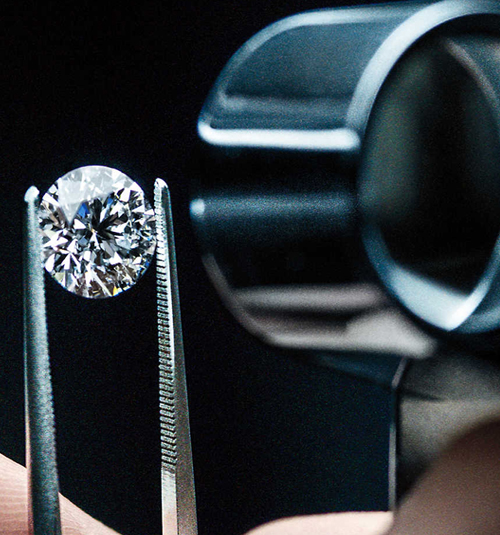What Are Lab-Grown Diamonds?
Optically: Indistinguishable from the naked eye, lab-grown diamonds present the same visible qualities as their natural counterparts.
Chemically: Lab-grown diamonds are not simulants. They are formed from rough crystals taking an average of 2–4 weeks.
Physically: To confidently tell lab-grown and natural diamonds apart, advanced instruments are needed to detect the physical aspects.

How Are Lab-Grown Diamonds Created?
Lab-Grown Diamond manufacturers operate in highly controlled lab environments using one of two methods: High Pressure High Temperature (HPHT) or Chemical Vapor Deposition (CVD).
Both processes begin with a diamond seed and result in a Lab-Grown Diamond. During the HPHT method, the scientist places the diamond seed in a growth chamber (apparatus), heats it to 2,700–3,100 degrees Fahrenheit, and exposes the seed to a pressure of 725,000 pounds per square inch, similar to the process that takes place in Earth’s mantle. The diamond seed remains under these intense conditions for varying lengths of time.
The CVD method of Lab-Grown Diamond creation begins with flat diamond slabs placed in a reactor. The reactor is injected with Methane gas. The gas is exposed to microwaves which cause it to break down into its comprising atoms and generate a carbon-rich plasma cloud. The carbon atoms in the plasma connect with the diamond slabs and create new layers, resulting in slow vertical growth.
Both the HPHT process and the CVD process produce Type IIa colorless Lab-Grown Diamonds, equal to some of the rare and sought-after types of Natural Diamond. These processes can also be adjusted to produce colored Lab-Grown Diamonds.
What is the benefit of buying lab-grown diamonds?
What is the benefit of buying lab-grown diamonds?
Lab-grown diamonds offer customers an opportunity to buy a larger or higher quality diamond at an attainable price point.
How do I care for loose lab-grown diamonds?
Lab-grown diamonds have the same chemical composition as natural diamonds and should be treated and cared for in the same way. All diamonds, mined and lab-grown, are rated excellent for everyday wear.
What is the difference between lab-grown diamonds and Moissanite?
Lab-Grown Diamonds are made of carbon, which is identical to natural diamonds. Diamonds (natural and lab-grown) have a hardness of 10 according to the Mohs hardness scale. Moissanite, on the other hand, is made of silicon carbide and has a hardness of 9.25.
How do I tell if a lab-grown diamond is real?
Lab-grown diamonds are real diamonds. They are made up of a single element, carbon, just as their natural counterparts and have the same optical and physical properties. Advanced testing and screening are needed to distinguish between lab-grown diamonds and natural diamonds.
What is the difference between a natural diamond and a lab-grown diamond?
The only difference between a natural diamond and lab-grown diamond is how they are grown. Natural diamonds are grown and found in nature with little to no human intervention. Lab-grown diamonds, on the other hand, are grown in a lab with the help of scientists.
What are the 4C's of lab-grown diamonds?
Lab-grown diamonds have the same four Cs as natural diamonds: Cut, Color, Clarity, and Carat Weight.




